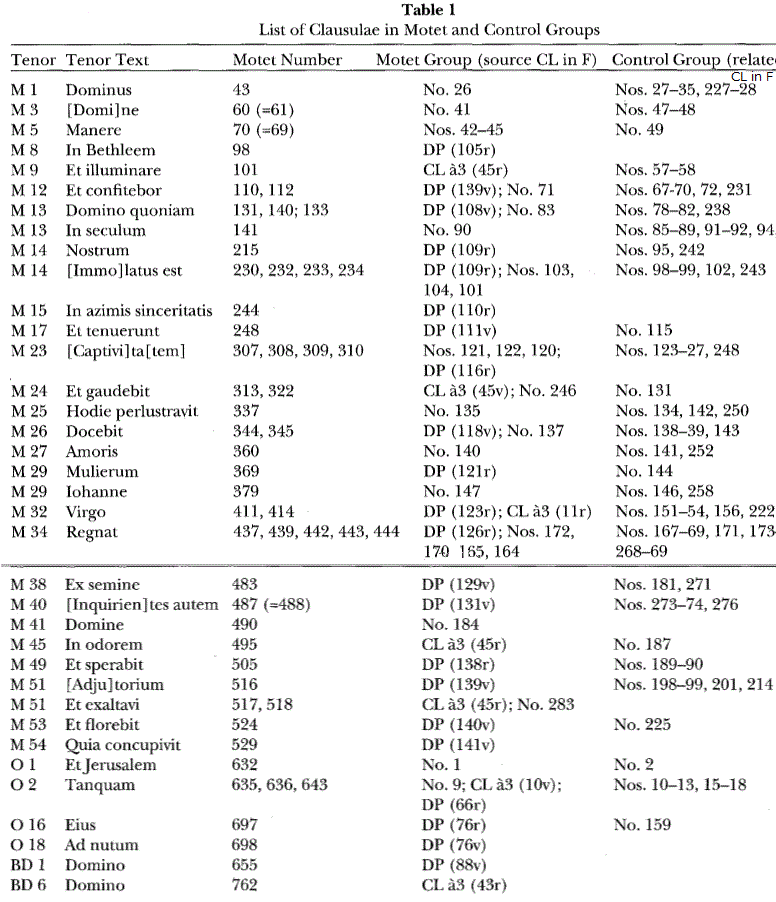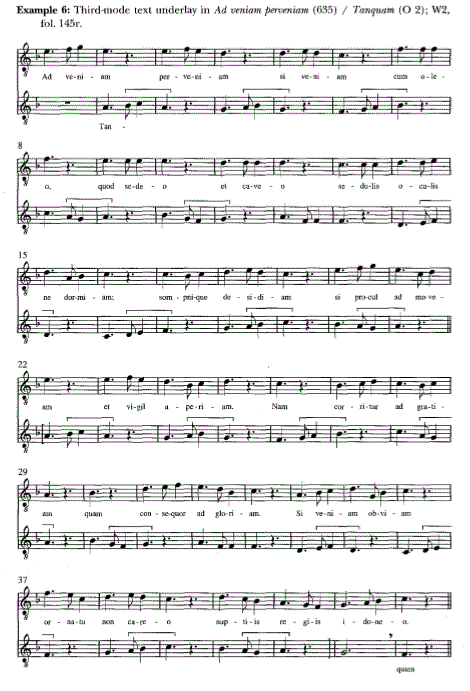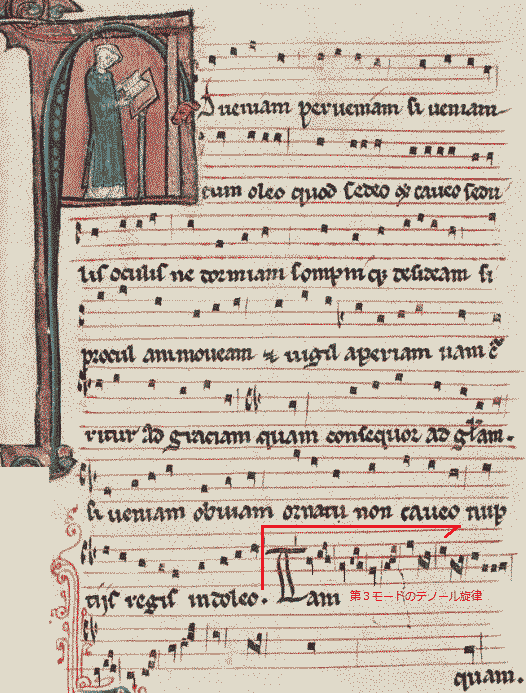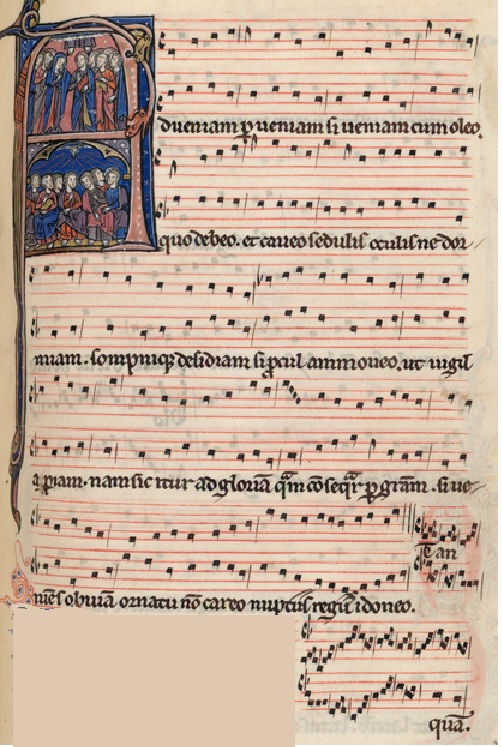| The Selection of Clausula
Sources for ThirteenthCentury Motets: Some Practical Considerations and Aesthetic Implications |
●The Selection of Clausula Sources for ThirteenthCentury
Motets: Some Practical Considerations and Aesthetic Implications By
Susan A. Kidwell  ●fractio modiとextensio modiの説明 "Modal impurity" can result from breaking or "fracturing" the long into two breves, or from extending the long into a ternary long, . which then substitutes for a long-breve combination. Following Apel (1953) and Smith (1990), I will refer to the process of fracturing the long in the modal pattern as fractio modi, and extending the long in the modal pattern as extensio modi. (同書p5) ●第三モードのclaususaはmotet化しにくかったが、例外もあった It is also striking that composers avoided converting third-mode clausulae into motets. The rhythmic pattern of mode 3 would have presented special problems for composers of early Latin motets, who generally underlaid texts to preexisting clausulae in such a manner as to have poetic accents coincide with musical ones. Since the rhythmic pattern of mode 3 begins with two accented notes, it requires the text underlay of two adjacent accented syllables. The composer of Ad veniam per veniam came up with an ingenious solution: as shown below in example 6, he started most lines of text with either a one- or a four-syllable word, which allows for correct text declamation in the third mode.(同書p13より改変)   W2 145r なお、W2 145rにあるこの2声のモテットは、下記のF写本にある同じモテットのうちのtriplumがreductionされたものではないか、という意見がある。(French motetes in the thirteenth century by MARK EVERISTp30参照)。  http://diglib.hab.de/mss/1099-helmst/start.htmF381r(Magnus Liber p100) |